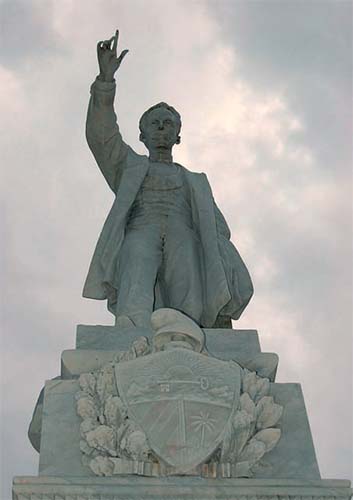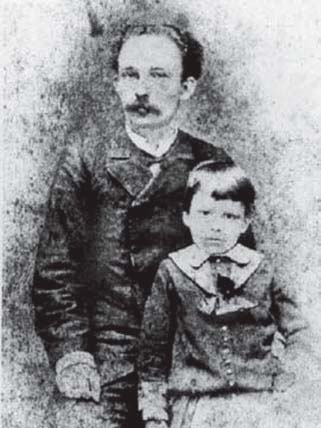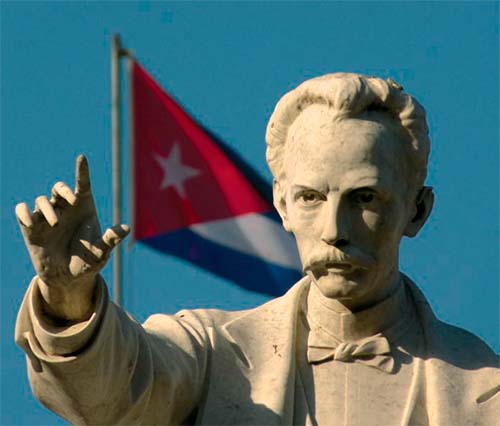
Where did José Martí find the time to do everything he did?
 He united the independence forces, founded a political party, and led the war against Spain. At 17, he was deported after serving prison time and hard labor despite being a minor, and lived most of the rest of his life in exile. He studied for two university degrees in Spain; worked as a lawyer and accountant; and was a teacher in Guatemala, Venezuela and the United States.
He united the independence forces, founded a political party, and led the war against Spain. At 17, he was deported after serving prison time and hard labor despite being a minor, and lived most of the rest of his life in exile. He studied for two university degrees in Spain; worked as a lawyer and accountant; and was a teacher in Guatemala, Venezuela and the United States.
In New York, he was the consul for several South American countries, representing them at international conferences. He was an orator. And as a lifelong journalist, he created and directed a newspaper, Patria, and published several magazines, including La edad de oro, which he wrote from cover to cover for the children of America. He wrote directly in English for U.S. newspapers. He did theater, wrote a novel. As a poet, he is one of the greatest in the Spanish language, and his writing began the movement known as Modernism, although, in the end, it cannot be categorizedhellip; His complete worksmdash;chronicles, articles, essays, literature, letters, and speechesmdash; fill almost 30 volumes of more than 300 pages each. Where did this man, who lived for only 42 years, find the time to do everything that he did? Did his political and professional work leave him any time for a private life? Did he love?
 Martí was a man who needed warmth. It was only in battles of love or action that he was able to find the right temperature," says writer Jorge Mañach in Martí el Apóstol, his superb biography of Cuba's national hero.
Martí was a man who needed warmth. It was only in battles of love or action that he was able to find the right temperature," says writer Jorge Mañach in Martí el Apóstol, his superb biography of Cuba's national hero.
Essayist Cintio Vitier used to say that Martí was the first revolutionary of America; that, according to Vitier, is like saying that he was the continent's first poet. Martí created and foretold. He transformed reality. He was a visionary, the driving force behind the Revolution that could not be postponed on the island at that time (1895). He was the poet who took on history. The homeland incarnate in a man. While his life and work represent the culmination of the Cuban people's long journey to obtain their independence and define their identity, the prose and poetry of Martí represent the pinnacle of national literature.
 When scholars refer to his poetic work, they also refer to his speeches and articles. One great Spanish thinker, Miguel de Unamuno, suggested that Martí wrote in a type of protoplasmatic language; that is, it was a language that predated the split between verse and prose.
When scholars refer to his poetic work, they also refer to his speeches and articles. One great Spanish thinker, Miguel de Unamuno, suggested that Martí wrote in a type of protoplasmatic language; that is, it was a language that predated the split between verse and prose.
And that is because, as Vitier emphasizes, there was only one language for this poet: the language of the heart, which his pulse transmitted to his pen. It was art that sprang forth ferociously from life.
 It is impossible to make such a brief summary of the vicissitudes of his life. In Mexico, Martí wrote for the theater, and his articles and speeches reaffirmed the coherency of his thought. In Guatemala, he worked as a professor of literature and the history of philosophy at the Escuela Normal para Maestros, a teachers' college. In Havana, he worked with a lawyers' firm, but was deported again; he never returned to Cuba after that except to do battle and to die. From Spain to New York. On the island, the so-called Little War [one of three independence wars] took place, and its failure made Martí understand that it is not the role of strongmen that makes a revolution victorious, but the support of the whole people.
It is impossible to make such a brief summary of the vicissitudes of his life. In Mexico, Martí wrote for the theater, and his articles and speeches reaffirmed the coherency of his thought. In Guatemala, he worked as a professor of literature and the history of philosophy at the Escuela Normal para Maestros, a teachers' college. In Havana, he worked with a lawyers' firm, but was deported again; he never returned to Cuba after that except to do battle and to die. From Spain to New York. On the island, the so-called Little War [one of three independence wars] took place, and its failure made Martí understand that it is not the role of strongmen that makes a revolution victorious, but the support of the whole people.
In Caracas, he founded a magazine, Revista Venezolana, and wrote the poems that would become Ismaelillo, the book that began the Modernism movement. From 1880 to 1890, he became famous throughout America: the newspapers of more than 20 countries printed his chronicles and articles. In his journalism, literature was intertwined with the feverish, dynamic life of those times; some of his pieces were veritable essays. His North American Scenes" series made him into a great chronicler of life in the United States during that decade. But the focus of his attention in his journalistic writing was turned toward the problems of Cuba and Latin America.
 Martí lived under the sign of urgency. He united the Cuban émigrés who had been so scattered until then. Black and white, young and old, rich and poorhellip; His rapt, passionate eloquence was moving and overpowering. He founded the Cuban Revolutionary Party and directed its newspaper, Patria. He met with Cubans who lived in Santo Domingo, Jamaica, Costa Rica, and Mexico. He united forces. The Revolution, led by Martí, broke out on Feb. 24, 1895. By April 11, he was in the insurrectionist camp. In early May, the main leaders gathered. They agreed to take the war to the island's western region, and they asked Martí to go abroad again. But facing the enemy, Martí fell in combat on May 19. His importance for Latin American culture is similar to his transcendence and importance in the political and social process of what he called Our America.
Martí lived under the sign of urgency. He united the Cuban émigrés who had been so scattered until then. Black and white, young and old, rich and poorhellip; His rapt, passionate eloquence was moving and overpowering. He founded the Cuban Revolutionary Party and directed its newspaper, Patria. He met with Cubans who lived in Santo Domingo, Jamaica, Costa Rica, and Mexico. He united forces. The Revolution, led by Martí, broke out on Feb. 24, 1895. By April 11, he was in the insurrectionist camp. In early May, the main leaders gathered. They agreed to take the war to the island's western region, and they asked Martí to go abroad again. But facing the enemy, Martí fell in combat on May 19. His importance for Latin American culture is similar to his transcendence and importance in the political and social process of what he called Our America.